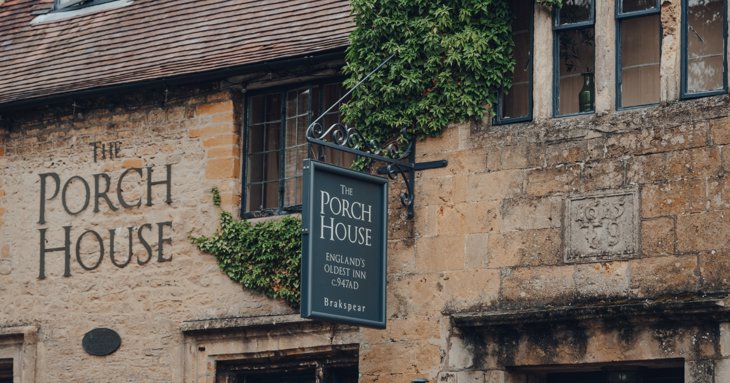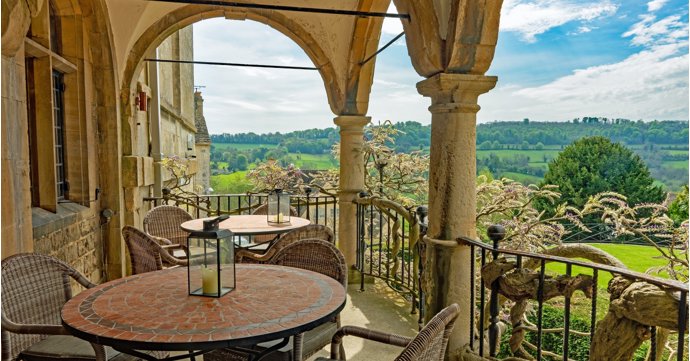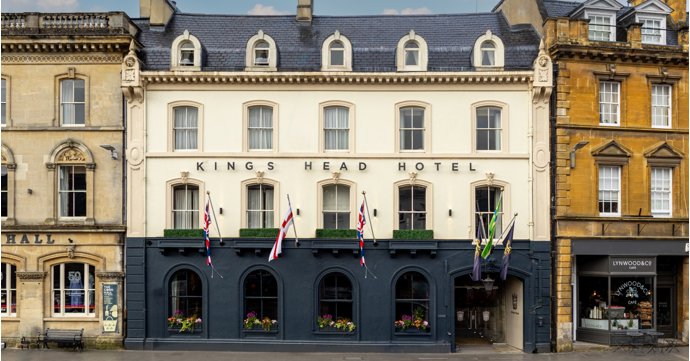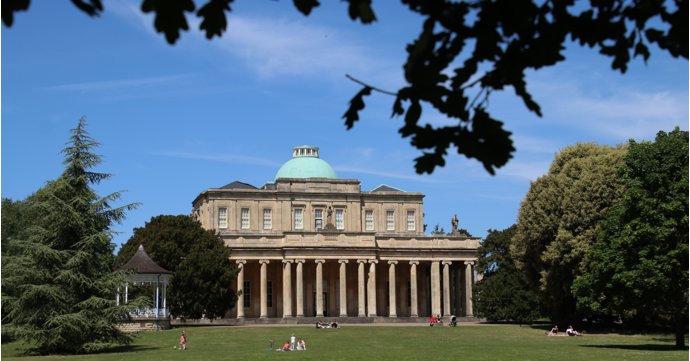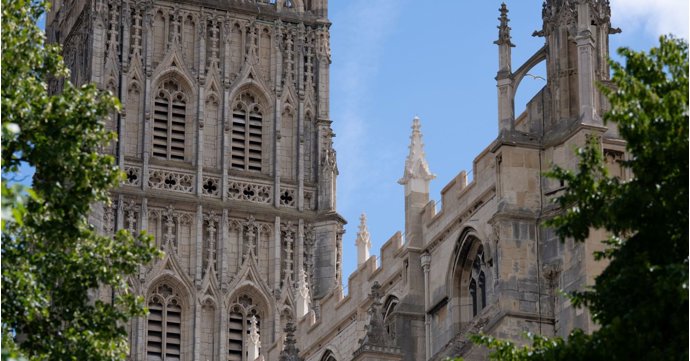Boasting much more than just local beer and comfortable rooms, Gloucestershire is home to some of the country's most historic pubs and hotels — with the oldest dating back to 947AD.
Encompassing everything from royal connections and historic battles to ghost sightings, SoGlos delves into the hidden histories of some of the county’s popular venues.
Egypt Mill in Nailsworth
Situated in Nailsworth on the banks of the River Frome, Egypt Mill stands on the site of a small, 14th century corn mill — of which one roadside wall still remains today. The first official record of the hotel and restaurant dates back to 1656, when it was bought by London haberdasher George Hudson.
By 1675, the building contained two fulling mills, a gig mill and a dye house and belonged to Richard Webb, who assumed the name Pharaoh. While he may have christened the mill, historians are still unsure how it became known as ‘Egypt’ — with one theory attributing its name to the early Egyptian travellers that once settled on the river banks.
Stonehouse Court Hotel
Now a picturesque hotel and restaurant, Stonehouse Court was once the town’s manor house. It boasts a fascinating history which dates back to the Anglo-Saxon era, when the rights and tenement of the manorial lordship were granted to William De Ow by his cousin, William the Conqueror.
The next thousand years saw the rights change hands several times with a period of occupancy by the Earls of Arundel; a minor Wars of the Roses battle on the grounds of the estate; and a devastating fire in 1908, which is responsible for Stonehouse Court’s unauthenticated ghost, John Henry the butler, who supposedly started the blaze.
The Porch House in Stow-on-the-Wold
Dating back to 947AD, The Porch House in Stow-on-the-Wold is commonly thought to be England’s oldest inn. Historians believe it was originally a hospice, built on land owned by Evesham Abbey by order of Aethelmar, the Duke of Cornwall.
The venue is also linked to the mysterious disappearance of 15-year-old John Shellard, part of the family who took ownership of the building in the Tudor era. There are still visible symbols by the 16th century fireplace which are thought to have been incised for protection against witches.
The Fountain Inn in Gloucester
Operating as an inn since at least the 14th century, The Fountain Inn is one of Gloucester’s oldest known sites connected with the brewing trade. It was once owned by Peter Poitevin, allegedly the bishop who crowned young King Henry III in 1216 at St Peter’s Abbey — now Gloucester Cathedral.
The pub boasts another royal connection, with a plaque in the courtyard commemorating a visit by William III. It’s believed that the king rode his horse up the stairs to show his contempt for the Jacobite rebels meeting there.
The Eight Bells Inn in Chipping Campden
Located in the historic market town of Chipping Campden, The Eight Bells Inn dates back to the 14th century, when it was built to house the stonemasons who were working on the construction of St James’ Church.
The quintessential Cotswold inn was later used to store the eight bells that were hung in the church’s tower, hence its current name.
Café René in Gloucester
Café René in Gloucester offers much more than live music, good food and real ales, with its foundations being part of the original Roman settlement in the city. An authentic Roman well even remains in the bar today!
Its heritage also includes underground passages, which were created to connect the cathedral to key points across the city — and used by monks as escape routes during the Reformation. Later, the same tunnels were used by Oliver Cromwell to evade the Cavaliers during the Civil War.
The Ostrich Inn in Newland
Now well-known for its rustic pub food, local ales and roaring fire place in the colder months, The Ostrich in Newland is one of the Forest of Dean's oldest inns.
Dating back to the 13th century, it is thought to have opened to accommodate workers who built the impressive 'Cathedral of the Forest', Newland Church, which sits opposite. It was rebuilt in the 17th century by the family of Sir Edmund Probyn, who served as a judge of the Kings Bench and Chief Baron of the Exchequer.
The Trouble House in Tetbury
The Trouble House was built by carpenter John Reeve in 1754 in a notoriously troublesome area of Tetbury, prone to flooding. It has lived up to its name over the years, suffering bad luck with issues ranging from historic financial problems to deaths.
Notable events include getting caught up in the agricultural riots of 1830 and being set on fire; a bankrupt owner who allegedly hanged himself from a beam in the pub; another who is rumoured to have drowned himself in a nearby pond; and the appearance of resident ghost, the Lady in Blue, in 1931.
The Kings Head Hotel in Cirencester
Once a 14th century coaching inn, The Kings Head Hotel in Cirencester is a building of special architectural and historical interest, with an incident that shaped the fate of the nation taking place there in 1642.
The event, now depicted in a famous painting by John Beecham, saw Giles Lord Chandos arrive in Cirencester with the commission of array to enlist troops for King Charles I. When the townspeople rose against him, killing some of his company and burning his coach, Lord Chandos escaped to The Kings Head Hotel, and was thus spared death.
Hatherley Manor in Gloucester
Built on the site of a medieval moated manor house, rumour has it that Hatherley Manor was commissioned for one of Oliver Cromwell’s illegitimate sons in the 17th century. Meanwhile, the site’s history stretches back over 1,000 years to the time of Edward the Confessor.
Throughout its history, Hatherley Manor has been in the possession of Sir Matthew Wood, who was Lord Mayor of London twice; and Anthony Gilbert Jones, mayor of Gloucester three times. Interestingly, Anthony’s son Charles patented the forerunner for the modern stepladder, while Jones and Co also drew up plans for the mass production of deckchairs.
Gupshill Manor in Tewkesbury
Established in 1431, Gupshill Manor’s fascinating history is centred around the 1471 Battle of Tewkesbury, with the venue standing at the heart of one of the bloodiest battles to take place during the War of the Roses.
The manor has also witnessed two great fires, one in the 17th century and one in the early 1900s, which reduced its size by more than half. What’s more, visitors to Gupshill can still see the ornately carved stonework stolen from Tewkesbury Monastery during King Henry VIII’s dissolution of the church.
The Lygon Arms in Broadway
The Lygon Arms in Broadway has roots dating back to the 1300s, but it is most notably linked to the Civil War in the 17th century, which pitted King Charles I against parliament.
Some of the action took place within its walls, with the king and his supporters assembling in what is now called the King Charles I Suite; and Oliver Cromwell staying in a room now dubbed The Cromwell Room on the night before the Battle of Worcester in 1651.
The Royal Hop Pole in Tewkesbury
Now a Wetherspoons pub, The Royal Hop Pole in Tewkesbury was immortalised in Charles Dickens’ classic novel, The Pickwick Papers, as the place where Mr Pickwick and Mr Ben Allen ‘stopped to dine’ and enjoyed bottled ale, Madeira and some port.
What’s more, following an 1891 visit by Princess Mary of Teck, who later became Queen Mary, the pub was given permission to display a coat of arms above its porch and the word ‘Royal’ was added to its name.
The Kings Arms in Stow-on-the-Wold
The Kings Arms in Stow-on-the-Wold was a primary filming location for the BBC’s adaptation of Thomas Hardy’s The Mayor of Casterbridge.
But the 500-year-old coaching inn has a rich heritage of its own, with King Charles I notably staying at the venue during the time of the Battle of Naseby.


